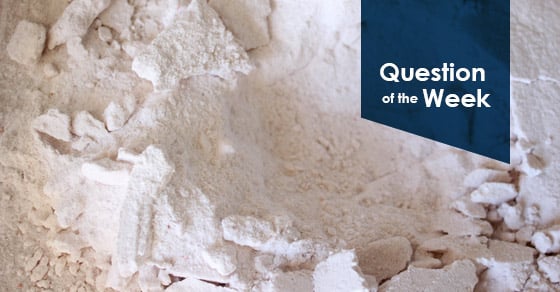Simply stated, hygroscopic materials absorb moisture, whereas hydrophobic materials do not absorb moisture from the environment. Knowing which category a material falls under plays an important role in our work in the Innovation Center; it affects the way in which a material is both stored and processed.
Storage. A hygroscopic material should be stored and sealed away from humid, moisture-rich environments, or caking and stickiness can occur. A hydrophobic material, such as coal for example, does not require special storage because it will not absorb moisture from its surroundings.
Processing. In regards to agglomeration, hydrophobic materials such as coal dust or carbon black require either a special (often tacky) binder and/or a higher amount of mechanical energy to force moisture into the material, to create the agglomerates.
An all too common processing issue with hygroscopic materials, such as potash, is clumping. Pre-drying can improve subsequent processing steps by reducing the probability of clumping during further processing. In addition, a coating drum may also be added to an agglomeration system set-up for hygroscopic materials, to coat and thus protect the agglomerates from moisture adsorption post-agglomeration.
Through steady use of our historical database in the Innovation Center, FEECO’s process experts have become well-versed in the nuances of hundreds of materials. This familiarity allows to conduct the very best in agglomeration and thermal test work, and in every step of the process, from storage to actual material processing.
For more information, contact us today!

